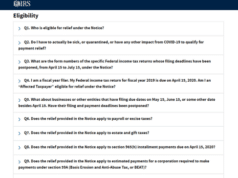
Because of its adaptability and tax benefits, Roth IRAs have quickly become one of the most popular vehicles for retirement savings. These are popular among investors because they offer protection from taxation.
According to data compiled by the Investment Company Institute, a global group responsible for regulating funds, approximately one-third of IRA participants use a Roth. For a stress-free retirement, the key is to start investing early.
But what exactly is a Roth IRA? This topic, along with the qualifications necessary to utilize a Roth IRA, how it is distinct from other retirement plans, and whether or not it is the best option for you, will be discussed below. So, read on.
What Does Roth IRA Mean?
A Roth IRA allows your deposited amount to grow without incurring additional taxes. The main benefit of Roth IRAs is that you can take money out of the account without incurring additional tax burdens as long as certain guidelines are adhered to. In contrast to the vast majority of other retirement plans, withdrawals made from a Roth IRA after retirement are not included as taxable income.
The Roth IRA is not an actual investment but a kind of investing account. You can hold any stocks, bonds, certificates of deposit, mutual funds, or ETFs in your Roth IRA. The overall performance of the securities you chose will decide whether or not your Roth IRA makes a profit or suffers a loss of funds. If you select a self-directed Roth IRA, you can invest in items other than what the vast majority of IRA custodians provide, such as cryptocurrencies.
The amount you deposit to a Roth IRA is not eligible to be deducted from your taxable income precisely as contributions to standard IRAs, and 401(k) plans are. However, when you have kept your Roth IRA for at least five years and reached 59 and a half, you are permitted to remove any amount of money from the account free of all taxes. Since Roth IRA is already taxed, you can withdraw your contributions (but not the gains) without fear of being taxed or punished. Certain 401k plans offer in service 401k distribution which rolls over into your IRA, so be sure you understand your retirement plan fully so that you can take advantage of the most investment opportunities possible.
How Much Should You Contribute To A Roth IRA?
The IRS places annual contribution caps on the number of money investors may put into their Roth IRAs. The maximum amount contributed to a Roth IRA in 2022 is $6,000, or the amount of taxable income for that year, whichever is lower. For 2023, the maximum amount is $6,500, or the amount of your taxable income for the year, whichever is lower. For instance, if you only made $5,000 this year, your contributions would be capped at $5,000 rather than the typical $6,000 ceiling because your income was below the threshold.
People who are 50 or older are eligible for a catch-up contribution from the IRS. Investors 50 years or older will be eligible to contribute an extra $1,000 per year beginning in 2022, raising their total contribution potential to $7,000.
Benefits Of A Roth IRA
Tax-Free Income in Retirement
Suppose you can take money from your Roth IRA after you retire without being subject to income tax. In that case, this might result in significant money saved on income tax, depending on how much you contributed to the Roth IRA and how well the investments in the account performed.
In addition, if you use money from your Roth IRA to make a significant purchase in the same year you retire, you won’t have to be concerned about having an abnormally high-income tax bill or the possibility of being moved into a higher tax bracket for that particular year. This is because the money will come from your Roth IRA, not your traditional IRA.
Tax- and Penalty-Free Withdrawals for First-Time Homebuyers
To be considered a first-time homeowner, you and your spouse must not have owned a property in the preceding two years while purchasing your first residence together. Because of this, you are entitled to withdraw up to $10,000 in profits from your Roth IRA without being subject to either the tax on early withdrawals or the early withdrawal penalty. On the other hand, the restriction of $10,000 is a lifetime maximum that does not get reset every year.
No Age Limit
You can contribute to Roth IRAs at any age, unlike other types of IRAs, for which contributions are prohibited after you turn 72.
Unrestricted Withdrawals of Contributions
A Roth IRA allows you to make penalty- and tax-free withdrawals of your initial investments throughout the account holder’s lifetime. Having paid income tax on the money in the year you earned it, you are free to withdraw the same money at any time, regardless of age or when you started the Roth IRA. This is because you paid income tax on the money in the year you earned it.
No Required Minimum Distributions
Required minimum distributions, more commonly abbreviated as RMDs, are predetermined sums of money that owners of various types of retirement accounts are obligated to withdraw at 72. RMDs do not apply to Roth IRAs since taking distributions from this kind of account does not affect the total amount of taxes the account owner owes.
Education
Regarding financial planning for higher education, some account holders opt to put their money into a Roth IRA rather than a 529 plan.
Tax-Efficient Inheritance Strategy
A Roth IRA could be left to your heirs in your will, and they will not be subject to any taxes when they get the remaining value in the account.
The Bottom Line
Putting money down in a Roth IRA can reduce the likelihood of later paying hefty tax bills. But do remember that they may also be utilized in conjunction with other retirement accounts such as 401(k) plans and regular IRAs.
Consult with a financial professional before starting a Roth IRA if you are contemplating doing so. They can assist you in formulating the most effective plan to maximize your wealth and reduce the tax liability you are responsible for.








